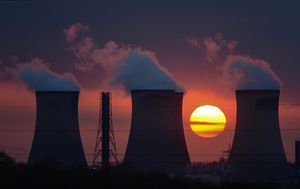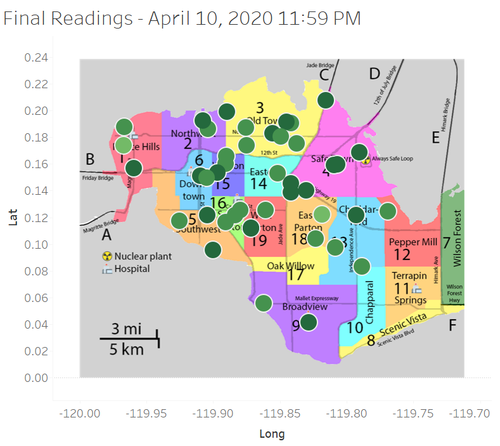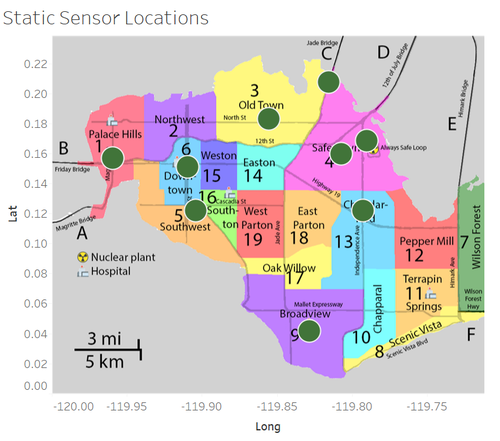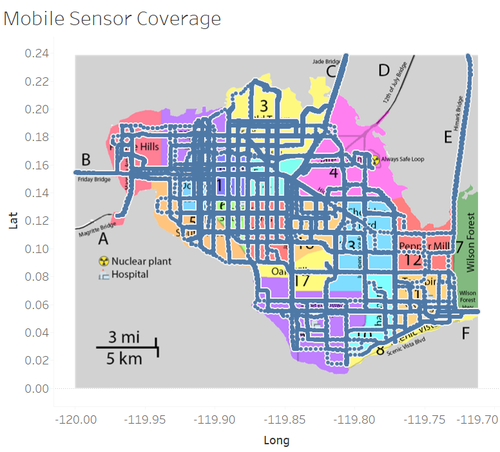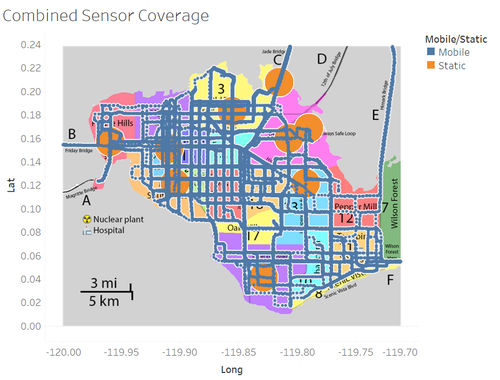IS428 AY2019-20T1 Assign Victor Lin Findings4
Jump to navigation
Jump to search
|
|
|
|
|
|
Q4. Summarize the state of radiation measurements at the end of the available period. Use your novel visualizations and analysis approaches to suggest a course of action for the city. Use visual analytics to compare the static sensor network to the mobile sensor network. What are the strengths and weaknesses of each approach? How do they support each other?
Overall, radiation readings have returned to safe levels. One course of action that the city can take is to train up more citizen scientists. By training up more citizen scientists, we can get their help in employing more homemade mobile sensors to collect data on the radiation levels. Furthermore, with increased expertise, the citizen scientists can help rectify any issues with existing sensors that are giving erroneous readings, reducing the uncertainty faced currently. With an increase in the numbers of mobile sensors, the coverage of the mobile sensor network will definitely improve.
